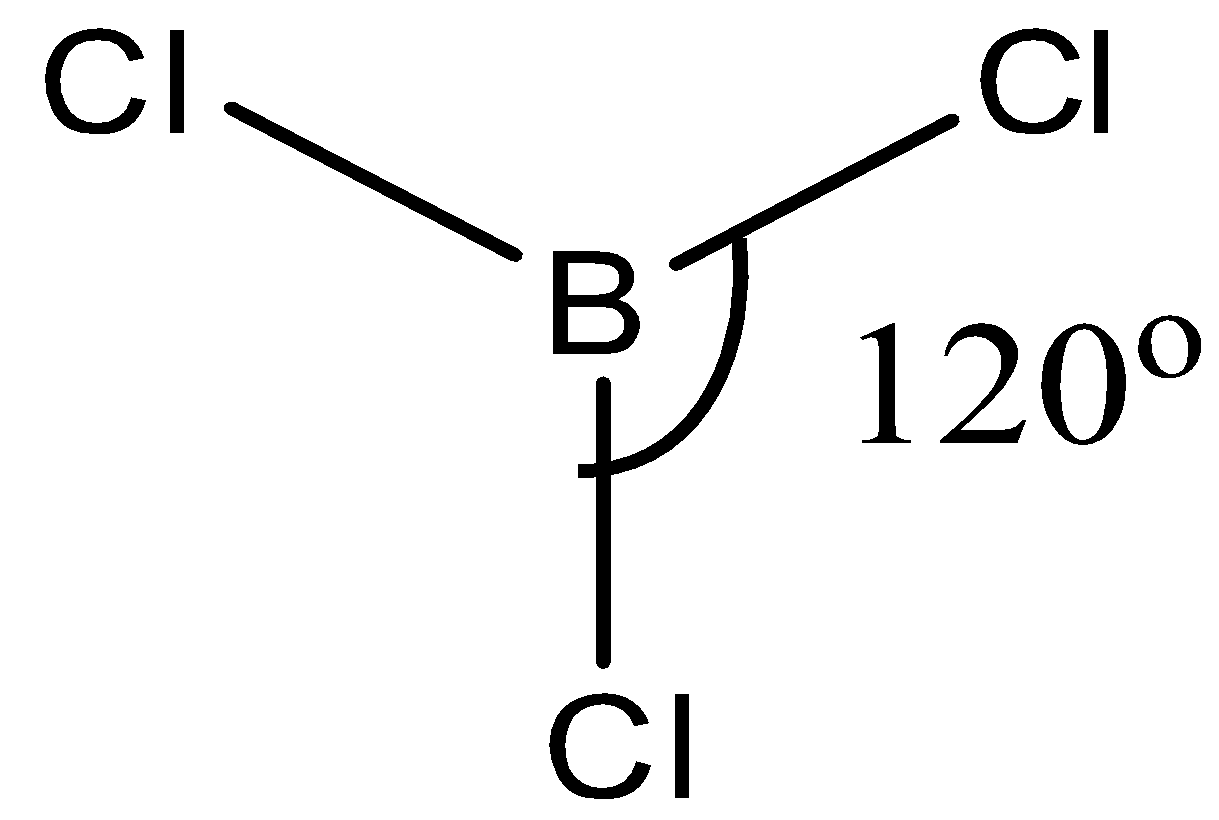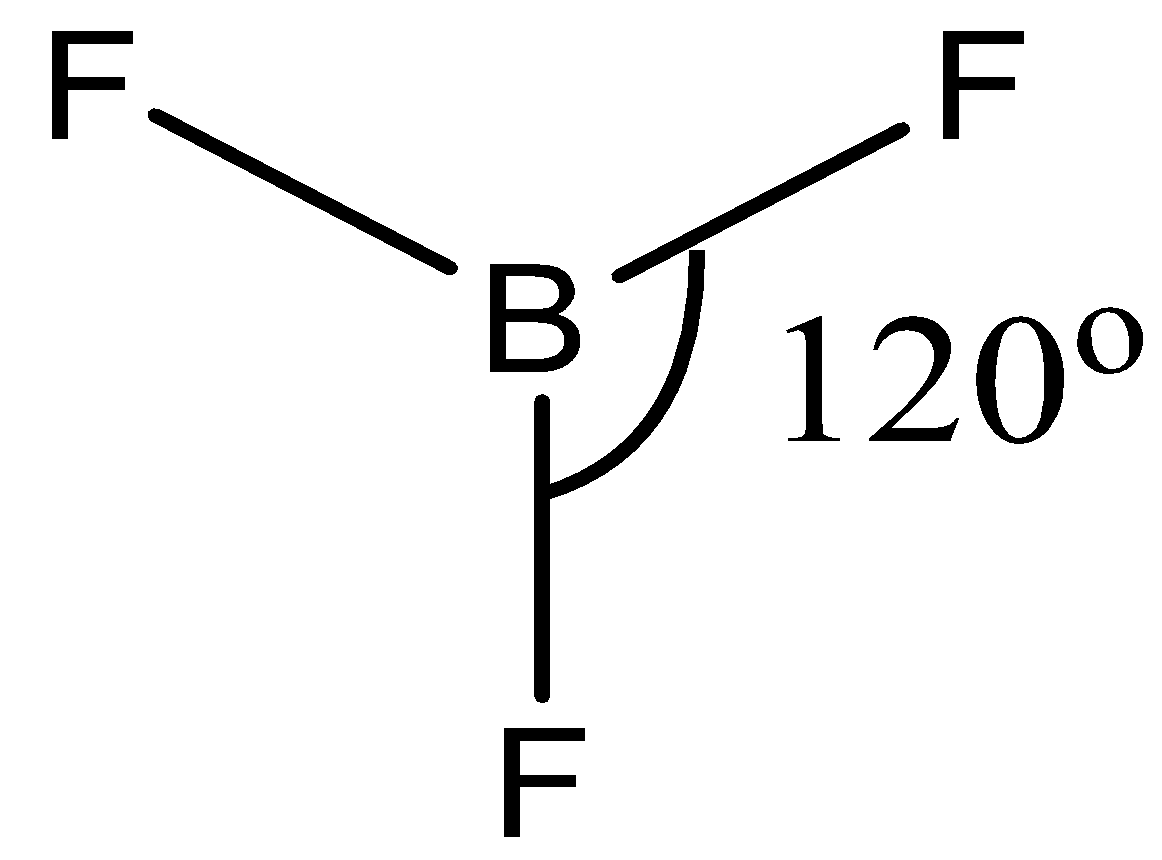
The bond angle around B in
Answer
518.4k+ views
Hint: Boron is the element of group 13. It has 3 valence electrons in its outer shell. On the basis of hybridization, the structure is estimated. The structure helps in finding the bond angle. The number of lone pairs should also be considered.
Complete answer:
Boron is the first element of the group 13.
Its outer electronic configuration is
It means that it has 3 valence electrons in its outer shell. Hence, it can form 3 bonds.
Now, in
Hence, the chlorine forms a single bond with the boron atom.
Now, all the 3 valence electrons of boron form a bond with the chlorine atom hence there are no lone pairs present in the compound.
Since there are 3 bonds in the compound the hybridization will be
And we know that
The trigonal planar has

Now, in
Hence, the chlorine forms a single bond with the boron atom.
Now, all the 3 valence electrons of boron form a bond with the Fluorine atom hence there is no lone pair present in the compound.
Since there are 3 bonds in the compound the hybridization will be
And we know that
The trigonal planar has

Hence the bond angle is the same in both cases.
Note: You may get confused that fluorine is a more electronegative atom so it would make a bond angle different from boron trichloride. The structure and bond angle depends on the number of bonds and the number of lone pairs around the central atom.
Complete answer:
Boron is the first element of the group 13.
Its outer electronic configuration is
It means that it has 3 valence electrons in its outer shell. Hence, it can form 3 bonds.
Now, in
Hence, the chlorine forms a single bond with the boron atom.
Now, all the 3 valence electrons of boron form a bond with the chlorine atom hence there are no lone pairs present in the compound.
Since there are 3 bonds in the compound the hybridization will be
And we know that
The trigonal planar has

Now, in
Hence, the chlorine forms a single bond with the boron atom.
Now, all the 3 valence electrons of boron form a bond with the Fluorine atom hence there is no lone pair present in the compound.
Since there are 3 bonds in the compound the hybridization will be
And we know that
The trigonal planar has

Hence the bond angle is the same in both cases.
Note: You may get confused that fluorine is a more electronegative atom so it would make a bond angle different from boron trichloride. The structure and bond angle depends on the number of bonds and the number of lone pairs around the central atom.
Recently Updated Pages
Master Class 11 Business Studies: Engaging Questions & Answers for Success

Master Class 11 Economics: Engaging Questions & Answers for Success

Master Class 11 Accountancy: Engaging Questions & Answers for Success

Master Class 11 Computer Science: Engaging Questions & Answers for Success

Master Class 11 English: Engaging Questions & Answers for Success

Master Class 11 Maths: Engaging Questions & Answers for Success

Trending doubts
Which one is a true fish A Jellyfish B Starfish C Dogfish class 11 biology CBSE

Difference Between Prokaryotic Cells and Eukaryotic Cells

1 ton equals to A 100 kg B 1000 kg C 10 kg D 10000 class 11 physics CBSE

One Metric ton is equal to kg A 10000 B 1000 C 100 class 11 physics CBSE

How much is 23 kg in pounds class 11 chemistry CBSE

Net gain of ATP in glycolysis a 6 b 2 c 4 d 8 class 11 biology CBSE




